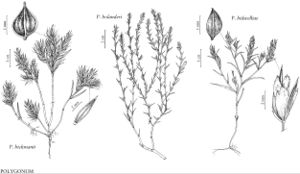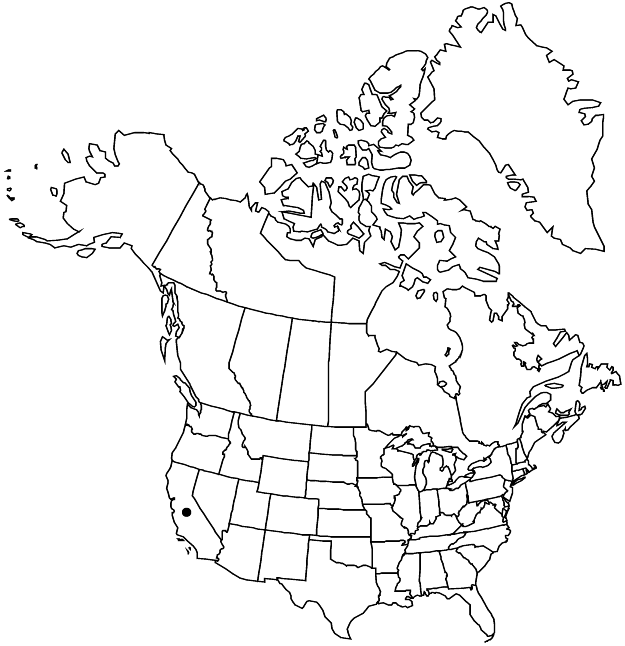Difference between revisions of "Polygonum bidwelliae"
Proc. Amer. Acad. Arts 14: 294. 1879.
FNA>Volume Importer |
FNA>Volume Importer |
(No difference)
| |
Revision as of 20:06, 24 September 2019
Herbs. Stems erect, green, simple or divaricately branched, ± wiry, 2–20 cm, minutely papillose-scabridulous. Leaves crowded at branch tips, not articulated to ocreae, basal leaves caducous or persistent, distal leaves abruptly reduced to bracts; ocrea 8–13 mm, papillose-scabridulous, proximal part cylindric, distal part overlapping and obscuring leaves and flowers, silvery, entire or shallowly dentate; petiole absent; blade 3-veined, without pleats, linear, 5–15(–20) × 0.5–1.5(–2) mm, margins revolute, papillose-denticulate, apex spine-tipped. Inflorescences axillary; cymes in distal axils, 1-flowered. Pedicels absent. Flowers closed; perianth 2–3 mm; tube 10–18% of perianth length; tepals overlapping, pink with pink or white margins, petaloid, elliptic, navicular, apex acute to acuminate; midveins unbranched; stamens 8. Achenes enclosed in perianth at maturity, light brown to brown, ovate-elliptic, 1.8–2.3 mm, faces subequal, shiny, smooth.
Phenology: Flowering May–Jun.
Habitat: Thin volcanic soils, chaparral, montane woodland valleys, grasslands
Elevation: 60-1200 m
Discussion
Polygonum bidwelliae occurs in the Cascade Range and northeastern Sacramento Valley in Butte, Shasta, and Tehama counties.
Selected References
None.

